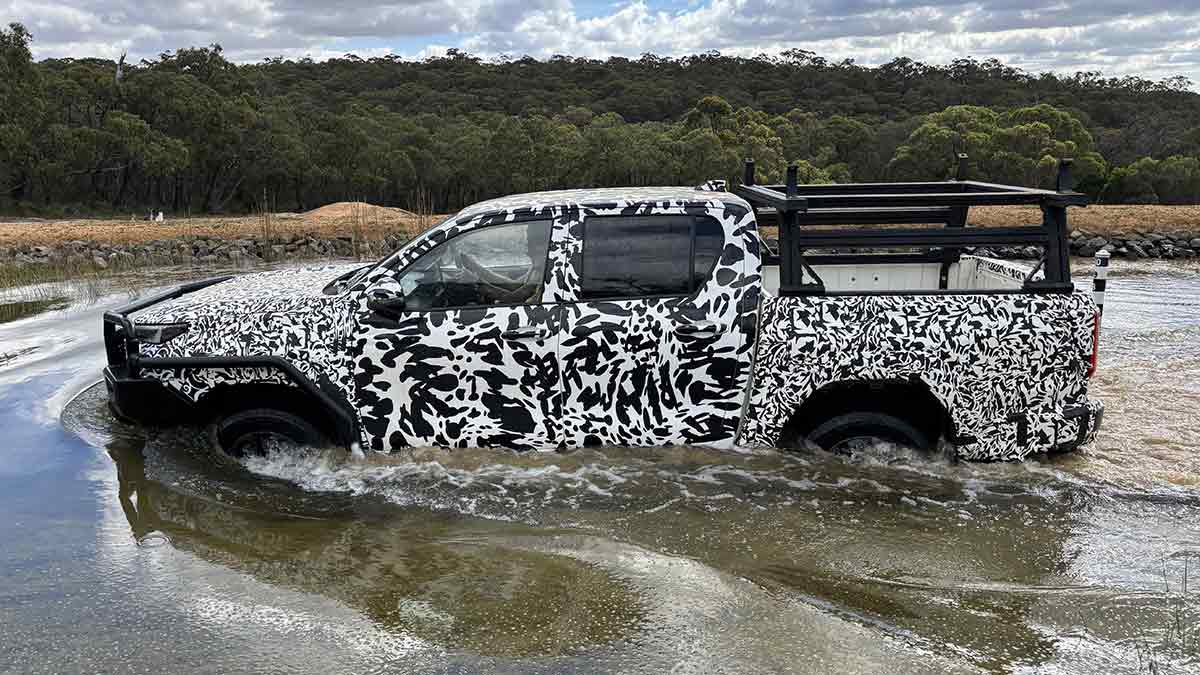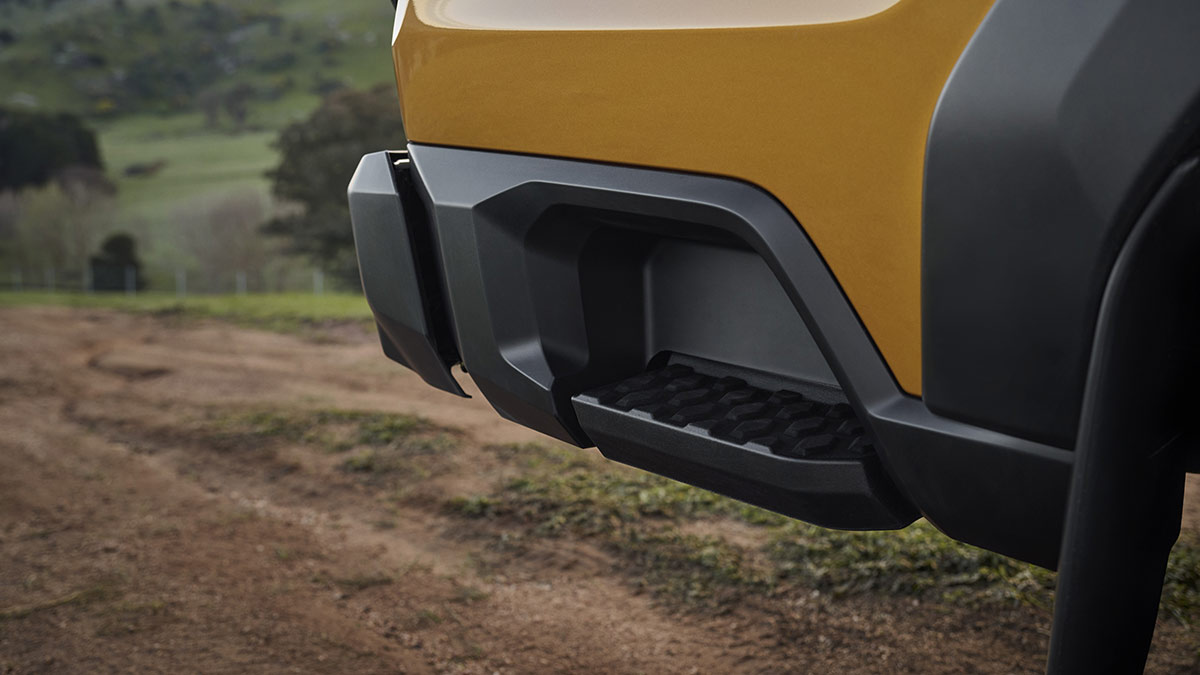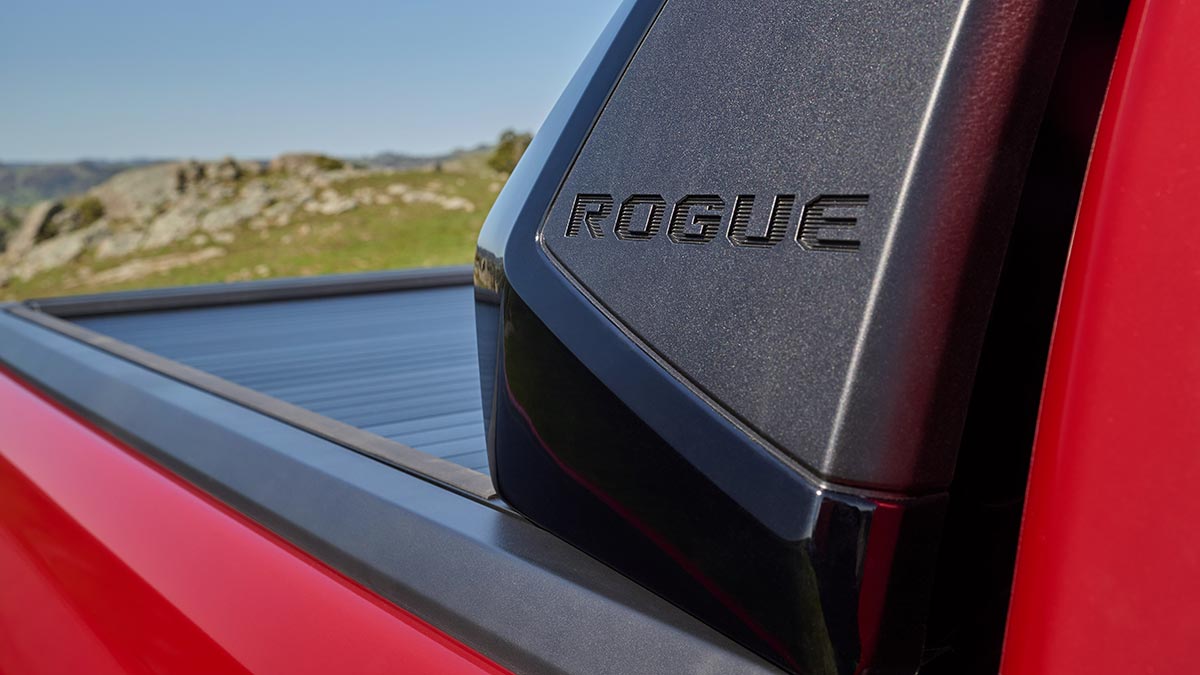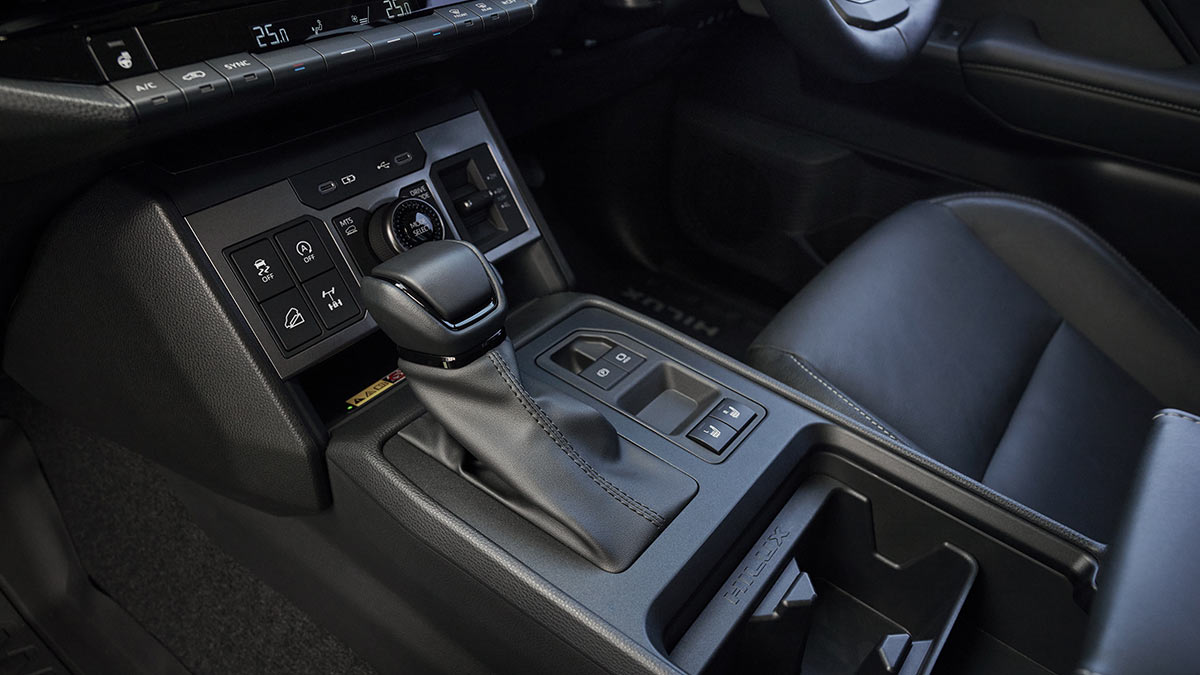Are you in the market for a new ute? From towing, work and family duties to off-road adventures, performance and value, here are the best 4x4 dual-cab utes in Australia to put on your shopping list.
2026 Toyota HiLux: price, specs and release date in Australia
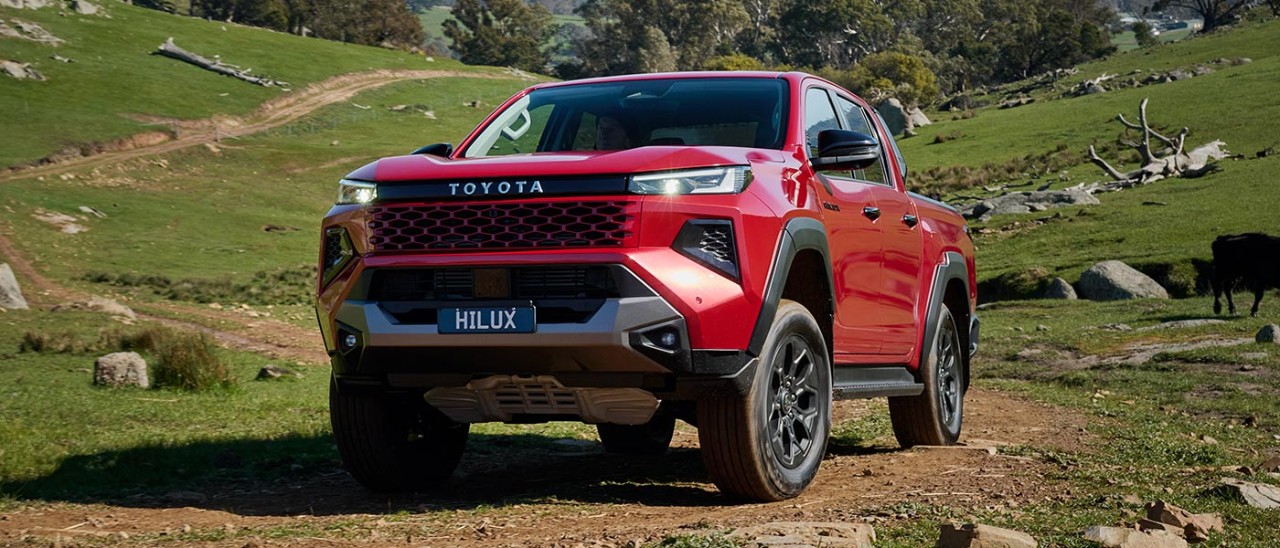
The new Toyota HiLux ute is looking to wrest leadership back from the Ford Ranger, offering an Aussie design, revamped cabin, higher tech and both diesel and EV powertrains. Here’s everything you need to know about the ninth-generation HiLux now on sale.
The new-generation 2026 Toyota HiLux has emerged before first deliveries begin at the end of this year.
Australia’s top-selling new vehicle for seven of the past 10 years, the Toyota HiLux is primed to regain the segment leadership it lost to the Ford Ranger in 2022 with a huge overhaul that brings a striking new look, redesigned cabin, up-to-date technology and optional battery-electric (BEV) and hydrogen fuel-cell electric (FCEV) power – in addition to diesel.
Yes, the first-ever HiLux EV is on our doorstep as an intriguing alternative to the plug-in hybrid BYD Shark 6, Ford Ranger PHEV and GWM Cannon Alpha PHEV. Toyota’s new ute is also claimed to be the most Australian HiLux ever built, with local teams leading the global exterior and interior design, as well as guiding the suspension and chassis tuning.
Here a full rundown on the new 2026 Toyota HiLux that’s now on sale.
More: Research and compare utes and vans on sale today in Australia
In this article
- When does the 2026 Toyota HiLux go on sale in Australia?
- How much does the new Toyota HiLux cost?
- 2026 Toyota HiLux design and specification
- What powers the new Toyota HiLux?
- What is the towing capacity and payload of new Toyota HiLux?
- Is the 2026 Toyota HiLux better off-road?
- What safety and technology features on the new Toyota HiLux?
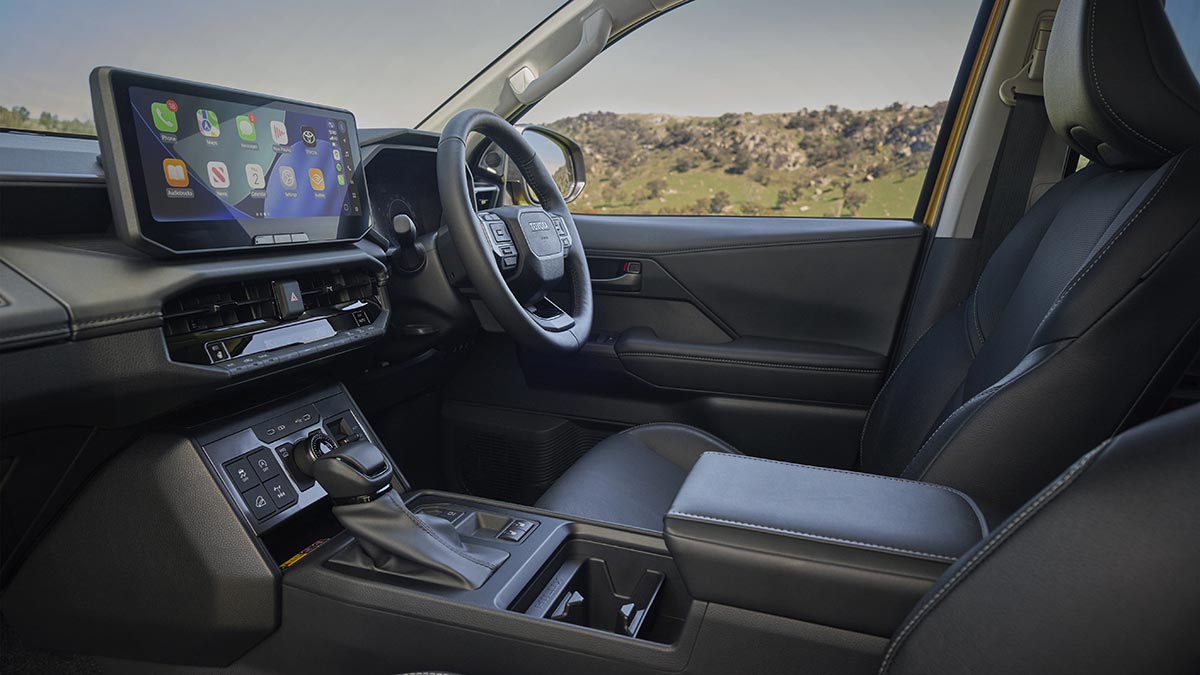
The 2026 Toyota HiLux cabin has received a full redesign, now with a 12.3-inch touchscreen dominating a three-tiered dash.
When does the 2026 Toyota HiLux go on sale in Australia?
The 2026 Toyota HiLux will be launched in December 2025, arriving in showrooms and reaching the first wave of customers before the New Year. Orders can be placed online and across Toyota’s vast dealer network now that pricing is available.
The launch line-up comprises diesel-powered models across familiar model grades including WorkMate, SR, SR5 and Rogue. GR Sport has gone for now, but the off-road-oriented Rugged X has made a return.
All up, there are 16 variants at launch across single, extra and dual cab configurations, including manual and automatic transmission availability and 4x2 and 4x4 drivelines. Battery-electric (BEV) variants are due to launch during the first half of 2026.
More: Australia’s best utes of 2025
How much does the new Toyota HiLux cost?
Significant upgrades brought with the 2026 Toyota HiLux have pushed pricing up across the diesel-powered range, which now opens at $33,990 plus on-road costs for the 4x2 WorkMate single cab-chassis manual.
This is well up on the current sub-$28,000 baseline (before on-roads) for HiLux but also reflects the deletion of 2.7-litre petrol and 2.4-litre diesel engines.
The long-serving 2.8-litre turbo-diesel is now found across the launch line-up – some variants with the continuing ‘V-Active’ mild-hybrid system – while the first-ever HiLux BEV will come on stream by mid-2026 in SR and SR5 4x4 dual cab guise. Pricing has not been released for the EV variants, but they’re expected to become the most expensive HiLux utes ever sold in Australia – under the $100,000 ceiling but, as Toyota makes clear, “largely aimed at fleet customers”.
The previous HiLux is no longer available to order online, with shipments from the factory in Thailand turning to the new series and all remaining stock now in the hands of dealers.
See our price box below for full details. Price increases hover around the $3000 to $4000 mark, depending on the variant, though kept to a minimum at the top end where the HiLux Rogue is only $460 more expensive.
| 2026 Toyota HiLux ute | |
|---|---|
|
WorkMate single cab-chassis 4x2 MT |
$33,990 |
|
WorkMate single cab-chassis 4x2 AT |
$35,990 |
|
WorkMate single cab-chassis 4x4 AT |
$45,990 |
|
WorkMate double cab pick-up 4x2 AT |
$47,990 |
|
WorkMate double cab-chassis 4x4 AT |
$52,490 |
|
SR double cab pick-up 4x2 AT |
$52,990 |
|
WorkMate double cab pick-up 4x4 AT |
$53,990 |
|
SR extra cab-chassis 4x4 AT |
$54,990 |
|
SR double cab-chassis 4x4 MT |
$54,990 |
|
SR double cab-chassis 48V 4x4 AT |
$57,990 |
|
SR double cab pick-up 48V 4x4 AT |
$59,490 |
|
SR5 double cab pick-up 4x4 MT |
$63,990 |
|
SR5 double cab-chassis 48V 4x4 AT |
$64,490 |
|
SR5 double cab pick-up 48V 4x4 AT |
$65,990 |
|
Rogue double cab pick-up 48V 4x4 AT |
$71,990 |
|
Rugged X double cab pick-up 48V 4x4 AT |
$71,990 |

The Aussie-designed Toyota HiLux Rogue (front) with SR5 (right) and WorkMate single cab-chassis.
2026 Toyota HiLux design and specification
The 2026 Toyota HiLux is based on the same platform and occupies the same footprint as the outgoing medium-sized one-tonne ute, with no scaling upwards as seen with some Chinese competitors like the BYD Shark 6, GWM Cannon Alpha, MG U9 and Foton Tunland.
Toyota Australia’s Altona-based design team is responsible for the new look of the HiLux, starting work on the program in 2021 that led to a sharp-angled ‘Cyber Sumo’ theme blending tough and modern styling cues.
Key reference points include high-set slimline LED headlights, a body-coloured mesh grille and striking trapezoidal shapes across the lower fascia. The exterior colour palette has two new additions, Sunglow and Ash Slate, joining Glacier White, Frosted White, Stunning Silver, Eclipse Black and Feverish Red. Premium paint adds $675.
Interior dimensions for all cab types are similar to the current model but Toyota claims to have completely overhauled the cabin with improved comfort, better ergonomics, advanced technology (details in the section below) and a more modern design overall.
The flatter three-tiered dash has a 12.3-inch multimedia touchscreen and digital instrument cluster fitted standard across the range, the latter a 7.0-inch display for WorkMate and SR grades and 12.3-inch from SR5 and above.
The infotainment system supports range-wide wireless Apple CarPlay and Android Auto smartphone connectivity, embedded satellite navigation, voice control and DAB+ digital radio. Even the entry WorkMate grade has two USB-C ports, while wireless smartphone charging is provided from SR grade onwards.
There are fewer buttons for managing the infotainment screen but the lower climate control switchgear includes a row of physical pushbuttons or, on entry-level models, conventional rotary dials.
New front and rear seats aim to improve comfort for all occupants, while the driver benefits from a wider centre console with a higher-mounted sliding lid on the storage box that better serves as an armrest.
Driver’s seat adjustment varies according to grade – maxing out at eight-way electric adjust with lumbar – and a new multifunction steering wheel has a broad range of controls grouped into three zones: infotainment, audio and driver assist. Steering wheel heating is also now offered on select models, joining other creature comforts found on higher-series variants (from SR5) such as heated front seats, dual-zone climate control, a cooled glove box and an electronic park brake.
The SR5 can also be optioned with a $2500 Premium Interior pack comprising black leather-accented upholstery, the high-spec electric driver’s seat and a nine-speaker JBL sound system.
Features unique to HiLux Rugged X include its grade-specific 18-inch alloy wheels, a bullbar, front and rear recovery points, LED light bar, decal package, sports bar and, inside, ‘mineral’ upholstery colour. It also has a standard-fit towing package and bedliner.
At the rear end, HiLux models with a pick-up body have steps built into the bumper corners to improve access to the load area.
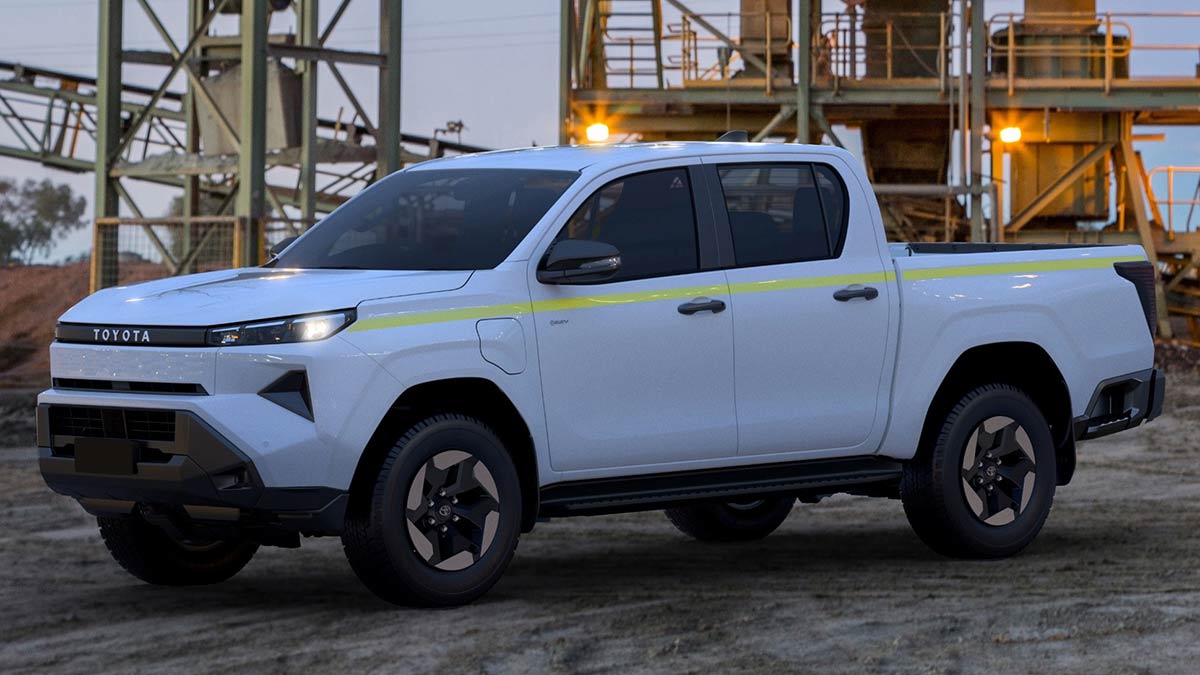
The first-ever Toyota HiLux EV has an electric motor at each axle and draws energy from a large lithium-ion battery pack.
What powers the new Toyota HiLux?
The 2026 Toyota HiLux is powered by a carryover version of the carmaker’s familiar 2.8-litre four-cylinder common-rail turbo-diesel engine (codenamed 1GD-FTV) that in standard form produces 150kW of power from 3000-3400rpm and 500Nm of torque from 1600-2800rpm when combined with the six-speed automatic transmission.
The six-speed manual variants produce the same power (at 3400rpm) but 80Nm less torque across a broader range – 420Nm from 1400-3400rpm.
Claimed fuel economy on the official (laboratory-based) combined-cycle test is 7.4L/100km for 4x2 and 4x4 auto models, dropping to 7.3L/100km for the 4x2 manual and as low as 7.1L/100km for the 4x4 manual, depending on the variant.
Toyota’s 48-volt ‘V-Active’ mild-hybrid system is standard on auto-equipped SR dual cab grades and above, adding stop-start functionality and an extra 8.5kW/65Nm (via an electric motor generator) for improved acceleration from a standing start. Maximum outputs are the same as the standard engine/auto combo and claimed combined-cycle fuel consumption ranges from 7.2-7.6L/100km, again depending on the specific variant.
The battery-electric Toyota HiLux BEV 4x4 will have an electric motor at both the front and rear axle, paired with a high-voltage lithium-ion battery. Further details will be released closer to the HiLux EV’s launch in the first half of 2026. A hydrogen fuel-cell electric vehicle (FCEV) powertrain will be introduced in 2028.
Gen 9 HiLux isn’t all-new but the generational change brings electric power steering, which Toyota claims delivers improved feel, response and ease of use “in all driving conditions”. Australian engineers were involved here, as well as with the tuning of the independent coil-sprung front and solid-axle leaf-sprung rear suspension.
The HiLux suspension now has two tunes at the rear, with springs and dampers firmer for heavier load carrying and towing on WorkMate and SR grades, moving to a softer set-up on SR5, Rogue and Rugged X for improved ride comfort and, as Toyota puts it, “adventure-oriented private use”.
Modifications to the carryover ladder-frame platform are also designed to improve comfort, rigidity and crash performance, including new hydraulic engine mounts and shear-type cabin mounts for reduced vibration and a more absorbent ride.
What is the towing capacity and payload of new Toyota HiLux?
As with the previous generation, the maximum braked towing capacity of the 2026 Toyota HiLux is 3500kg. Without trailer brakes, this reduces to 750kg.
A tongue and towball and trailer wire harness are fitted standard on Rogue and Rugged X, but sold separately on lesser model grades. An integrated towbar is fitted standard from the SR5 grade.
Gross combined mass (GCM) is 6300kg across the range, with gross vehicle mass (GVM) ranging from 3065-3120kg, depending on the variant. Kerb weight ranges from 1830-2327kg.
As a benchmark, the popular HiLux SR5 dual-cab 4x4 auto has a 3120kg GVM and 2020kg kerb weight, which leaves a 1100kg payload.
More: The best utes and SUVs for towing a caravan
Is the 2026 Toyota HiLux better off-road?
In 4x4 guise, the 2026 Toyota HiLux continues with a part-time four-wheel drive system with high and low range ratios.
The new generation also has a locking rear differential fitted standard, while the familiar Multi-Terrain Select (MTS) traction control system is now found on automatic SR 4x4 grades and above and, according to Toyota, has received “substantial tuning and refinement” for Australian conditions by the local engineering team.
Automatic double cab pick-up SR5 grades and up are fitted with a Multi-Terrain Monitor that uses cameras around the ute to provide views of the vehicle’s surroundings and underneath the body, along with the placement of the wheels to help navigate difficult off-road terrain.
Accessories available on the new HiLux include off-road-oriented equipment that was in some cases designed, developed and tested in Australia. These extend to bullbars, undercarriage protection, rock rails and a winch.
The new HiLux Rugged X has a bullbar, LED light bar and front and rear recovery points fitted standard.
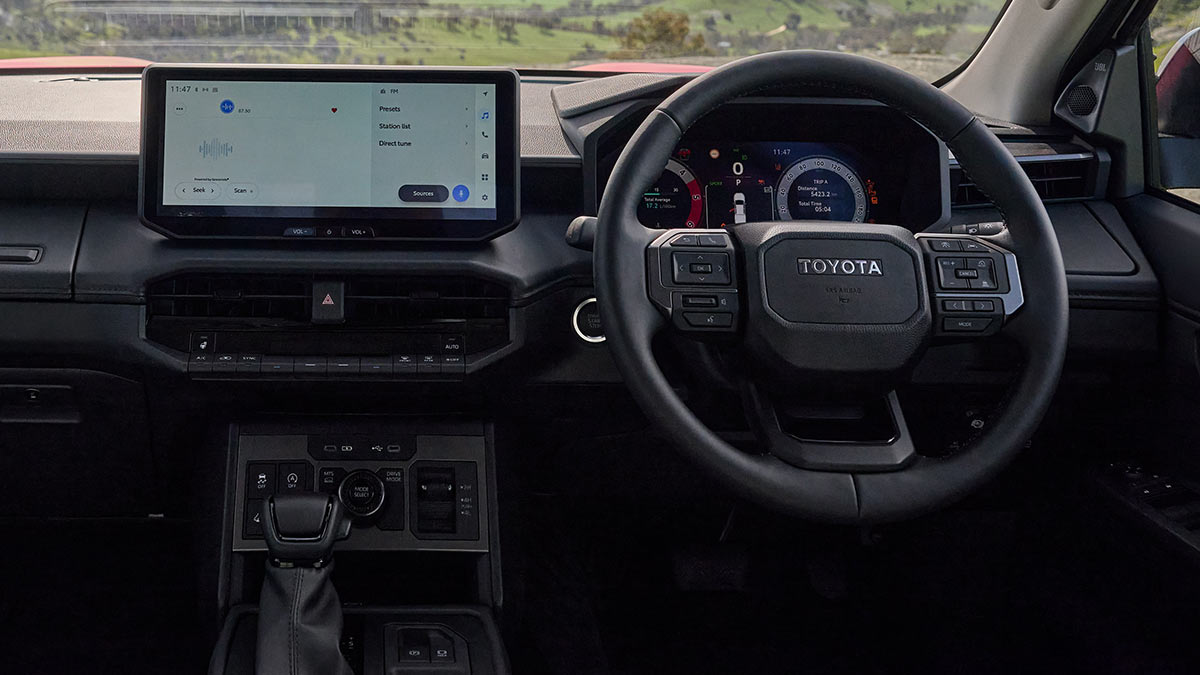
Twin digital screens bring the Toyota HiLux up to date, while buttons and switches on the dash, console and steering wheel will please traditionalists.
What safety and technology features on the new Toyota HiLux?
The new 2026 Toyota HiLux is designed to be a safer vehicle, starting with newly designed front chassis rail extensions that aim to improve impact absorption in the event of a crash. Eight airbags are also fitted standard across the range.
Advanced driver assist technology steps up a notch with upgrades under the ‘Toyota Safety Sense’ umbrella, which is standard across the HiLux range. This includes autonomous emergency braking, active cruise control, lane departure alert, lane trace assist, road sign assist (speed limit signs only) and automatic high beam.
Other standard safety features include a blind spot monitor, rear cross traffic alert, reversing camera and, on pick-up models, front and rear parking sensors. From the SR grade onwards, there’s a panoramic view monitor and tyre pressure monitoring system, while SR5 adds larger front disc brakes and ventilated rear discs, higher-grade auto-levelling LED headlights, LED tail-lights and a rear fog lamp.
The new HiLux is also the first Toyota to feature a new cabin detection alert system, which uses a radar to detect passengers in the rear seats and notify the driver when exiting the vehicle.
Toyota Connected Services (TCS) technology in HiLux has been expanded, such as the ability to remotely lock and unlock the vehicle (from SR grade and above). Automatic models from SR5 onwards can also now allow owners to activate the air-con from outside the vehicle.
All models are fitted with automatic collision notification with SOS emergency call (eCall) and access to a range of vehicle data via the MyToyota Connect smartphone app, all of which will be provided free of charge for the lifetime of Australia’s 4G network.
Owners also get a one-year free subscription to the more expansive Toyota Connect+ and Toyota Multimedia Connect services, which then require payment. These include connected navigation and a broader suite of remote commands.
More: What is eCall and how crash detection technology can save lives
The information provided is general advice only. Before making any decisions please consider your own circumstances and the Product Disclosure Statement and Target Market Determinations. For copies, visit racv.com.au. As distributor, RACV Insurance Services Pty Ltd AFS Licence No. 230039 receives commission for each policy sold or renewed. Product(s) issued by Insurance Manufacturers of Australia Pty Ltd ABN 93 004 208 084 AFS Licence No. 227678.
